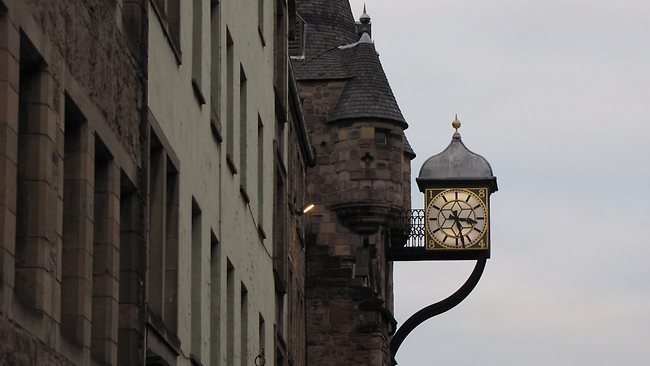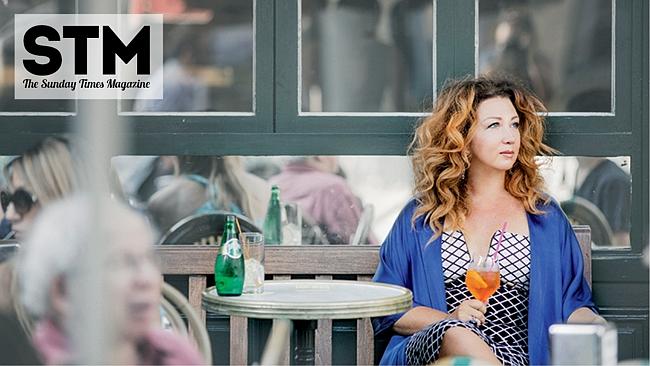Discovering hidden Edinburgh
EDINBURGH is mythical and mystical and has plenty of stories to tell, writes Sarah Nicholson.

I GOT my first impression of Edinburgh long before setting foot in the Scottish capital.
It was from a piece in the Lonely Planet magazine by Ian Rankin, author of the gritty Rebus novels capturing Edinburgh's seedy underbelly.
The long-time resident described the city as a spot that's both "blazingly public and intensely private".
"This quirk is something I've explored many times in my novels, because to me, it says lots about the nature of Edinburgh and how it came to be the way it is," Rankin wrote.
"The Scottish capital is bursting with stories, but sometimes you have to tease them out."
So when I finally got to visit, I decided to spend my first day in Edinburgh teasing stories out of the Royal Mile, the historical avenue that stretches from Edinburgh Castle to Holyrood Palace, forming the spine of the Old Town.
I was staying right on the iconic strip at the Hotel Missoni, a chic property designed by the Italian fashion house with rooms that felt like trendy New York warehouses. From my window, I looked across the jumbled rooftops of Castle Hill.
The Royal Mile was divided into four districts long ago.
Castle Hill, in the shadows of Edinburgh Castle, runs into Lawnmarket, High St and Canongate to form a chain down to the royal Holyrood residence.
I was hunting for stories with Edinburgh Blue Badge guide Ronnie Berri. Keen to get away from the tourists ambling along the Royal Mile, we darted into one of the dark pedestrian lanes that wind down the side of the steep ridge.
If the Royal Mile is the artery, then these arcades or closes are the capillaries. As well as supporting the steps that ascend to the newer parts of city, they also serve the antique buildings clinging to the side of the Old Town's narrow peak.
We wandered the winding turns of one, looking at the mixed bag of tall dwellings. Some seem very medieval while others were elegantly Georgian.
Ronnie told tales of the people who lived in the rooms above over the centuries. He pointed out the pigeon holes, explaining that birds were kept to supplement the local diet in the winter months. When we passed the Jolly Judge, he said that it was one of the city's oldest pubs where the burgh's early wigs would spend hours considering evidence.
"Edinburgh's judges were famous for returning a verdict while being completely sloshed," he said as I peered into the dark bar.
Back on the Royal Mile, we ascended to Edinburgh Castle, the baronial fortifications built in the 12th century as a royal sanctuary, and lingered in the car park that's been converted to a parade ground every August since 1947 to host the famed Royal Edinburgh Military Tattoo.
I was not that interested in hearing tales of assorted royals but I tried to look interested as Ronnie ran through the names of kings and queens linked to the fortress. But I did pay attention when he told me about the landmark's military history.
"This is a French road built by Napoleon's soldiers when they were imprisoned in the castle," he said, tapping his toes on the asphalt.
"Edinburgh Castle was a military base before World War I and 800 soldiers lived here before being moved to new barracks after the conflict, but small units are still sent to hold the castle every day.
"And a single shot has been fired at the same time every afternoon here since 1861 because back in Victorian times people had no way of knowing the time, so each town came up with a way of telling them.
"This was ours, a single shot at 1pm and we have continued the tradition."
The lofty fortifications provided the best view in Edinburgh and I looked across the New Town below to the Firth of Forth in the distance.
From here the city was a maze of narrow lanes and dark alleys, wide boulevards and busy streets, and I could appreciate how this "Athens of the north" grew after disease and decay drove residents down from the Royal Mile to live between Castle Hill and the River Forth.
Ronnie pointed out the island where the sick were dumped when a plague swept through in medieval times, the lighthouse protecting the port of Leith, and the Balmoral Hotel, where J.K. Rowling finished the last of the Harry Potter books.
From there we walked down the wide footpaths of the Royal Mile, past shops selling an assortment of tartan tourist tat, stopping often to hear more intriguing snippets.
There was history in the streets: Anchor Close, where the first edition of Encyclopedia Britannica was published; Brodie's Close, named after the father of the city's most entertaining 18th-century rogue; and World's End Close, once the Old Town's outer alley.
I saw John Knox House, thought to be the city's oldest dwelling; Canongate Church, which became the place to pray when the burgh grew out of Holyrood Abbey; and the cemetery where Robert Burns's words mark a fellow poet's gravestone.
I returned knowing I had heard those stories Rankin said the city would surrender if I really looked.
Go2
EDINBURGH
- Getting there
Edinburgh is 650km north of London. Flights are available or catch the regular National Rail (nationalrail.co.uk) services that make the journey in four or five hours via York and Newcastle.
- Staying there
Hotel Missoni is on the Royal Mile. See hotelmissoni.com
The Hotel Balmoral is a historical property with stylish bars and restaurants and is a short walk from the Old Town. See thebalmoralhotel.com
More: See visitscotland.com



